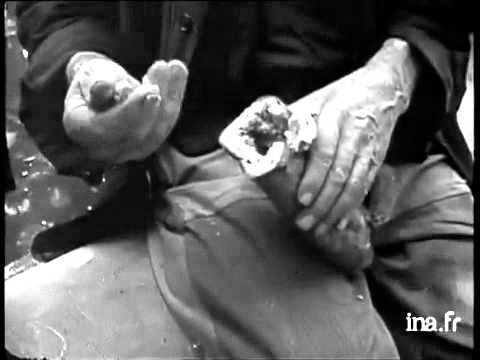Start date August 15, 1951 | ||
 | ||
The 1951 Pont-Saint-Esprit mass poisoning, also known as Le Pain Maudit, was a mass poisoning on 15 August 1951, in the small town of Pont-Saint-Esprit in southern France. More than 250 people were involved, including 50 persons interned in asylums and 7 deaths. A foodborne illness was suspected, and among these it was originally believed to be a case of "cursed bread" (pain maudit).
Contents
Most academic sources accept ergot poisoning as the cause of the epidemic, while a few theorize other causes such as poisoning by mercury, mycotoxins, or nitrogen trichloride. Fringe theorists have speculated that the United States Central Intelligence Agency (CIA) intentionally poisoned the population in order to test a "deliriant incapacitating agent" during the Cold War.

Ergot poisoning

Shortly after the incident, in September 1951, scientists writing in the British Medical Journal declared that “the outbreak of poisoning” was produced by ergot mold. The victims appeared to have one common connection. They had eaten bread from the bakery of Roch Briand who was subsequently blamed for using flour made from rye. According to reports at the time, the flour had been contaminated by a fungus similar to the hallucinogenic drug lysergic acid diethylamide (LSD).
Other theories

Later investigations suggested mercury poisoning due to the use of Panogen or other fungicides used to treat grains and seeds.

In 1982, a French researcher suggested Aspergillus fumigatus, a toxic fungus produced in grain silos, as a potential culprit.

In 2008, historian Steven Kaplan published a book on the incident (in French), entitled Le Pain Maudit. Kaplan asserts that the incident was connected neither to LSD research nor to ergot poisoning. Kaplan's book argues that the poisoning might have been caused by nitrogen trichloride used to artificially (and illegally) bleach flour.
Conspiracy theories
Researcher John Grant Fuller Jr.'s 1968 book, The Day of Saint Anthony's Fire concluded that a form of ergot that "logically has to be akin to LSD." was the likely culprit but that we may never know for certain because toxicologists and doctors could not reach an agreement. Citing the opinion of toxicologists, Fuller asserts that the symptoms exhibited by victims in Pont-Saint-Esprit were not consistent with mercury poisoning.
In his 2009 book, A Terrible Mistake, journalist Hank P. Albarelli Jr alleged that the Special Operations Division of the Central Intelligence Agency (CIA) tested the use of LSD on the population of Pont-Saint-Esprit as part of its MKNAOMI chemical behavior program in a field test dubbed Project SPAN. According to Albarelli, the ergot contamination explanation had been challenged and "ruled out". Historian Stephen Kaplan dismissed Albarelli's theories and assertions as "hardly possible", and anthropologist Bernd Rieken wrote that "even in the secular society of the present, substitutes for the devil and other demons may be found, in this case the CIA, which some people believe capable of every conceivable evil".
